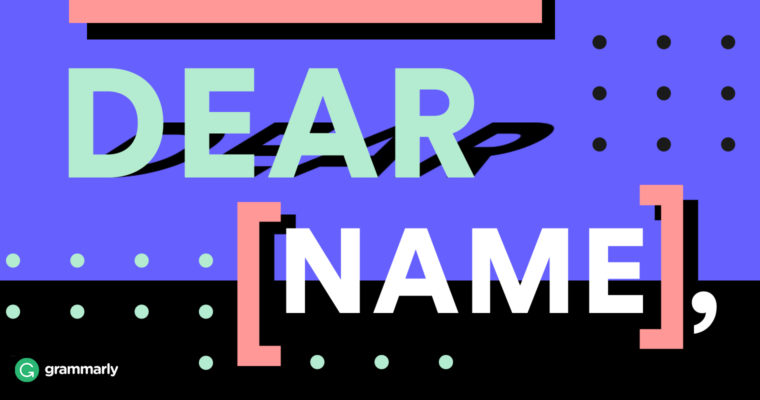
Networking is an artform. When you’re good at it, you become a Michelangelo, finely crafting relationships that will advance your career. But when your skills need work, you’re that guy on the street corner hawking pictures of Elvis painted on black velvet. Nobody responds to that guy’s email.
I’ve been writing and sending networking outreach for twenty years as a business owner, freelance writer, and media relations expert. With each carefully crafted email, I’ve increased my level of artistry. Networking does take work, but the results you’ll achieve by applying that effort are like the difference between a black velvet oil painting and the ceiling of the Sistine Chapel.
First, We Research
Before you begin networking, you need to get a sense of the person you plan to reach out to. In order to not sound like the black velvet Elvis salesman, you need to be authentic. The key to authenticity lies in doing research and learning more about the person you’re hoping to connect with.
Find the person on social media.
The easiest way to research is to look for the person’s public social accounts. Check LinkedIn, for starters. Note the person’s background and professional experience and the recommendations and endorsements they’ve given. Their volunteer activities will help you understand their interests and passions.
Does your potential connection have a Twitter account? The things a person tweets can tell you a lot about her. Less obvious but equally valuable social sites like Quora and Instagram can also help you gain insight.
Lay some groundwork
Lay a little groundwork as you’re browsing public social accounts. Follow your potential contact. Have they shared something interesting and relevant? Like, reply, or retweet. Upvote or comment on Quora posts. Do they write a blog? Post a comment when a blog post speaks to you. We humans like to be noticed.
As you research, look for common ground. Maybe you share the same home state, or you attended the same college. Although it’s not related to professional pursuits, maybe you like the same hobbies, or you both love dogs. These are all things you can use to help break the ice and establish a relationship. You don’t have to be a creeper, just find a few relevant things you can build upon once you make a connection.
Doing some early reconnaissance will allow you to approach your contact in a way that shows genuine interest. We tend to like people who sincerely want to know more about who we are and what we do.
Email Networking Tips
We’ll get to the networking email templates in a moment, but first let’s cover some important tips for crafting an email. There are a few guidelines that email experts agree upon.
- Keep it short. Research by Boomerang (the email productivity app) showed that emails between seventy-five and a hundred words long yielded the best response rates. But the rate of return dropped off slowly after that, so don’t be too concerned if you need more words to get your point across.
- Personalize it. If the stakes are high and getting a response is important, take the time to customize your email so that it doesn’t look like a template. You’re more likely to get a response if your recipient feels that your email was meant for him and only him.
- Use emotion. Boomerang also discovered that emotional language nets better response rates. Instead of writing Would you be interested in meeting for lunch next Tuesday at noon?, write It would be wonderful to chat with you over lunch. Does noon next Tuesday work?
- Don’t ask for anything right away. It’s much better to start with a warm-up if you can. Send a hello and a sincere compliment. Wait until your second email to ask for anything.
- Ask for just one thing. When you do ask for something—whether it’s for feedback, advice, or a meeting—ask for it clearly and confidently. Don’t cloud your email by presenting multiple options or by asking for more than one thing at a time. If getting to your goal will involve multiple steps, ask for step one and wait for an answer before moving to step two and beyond.
Four Networking Email Templates
If you’ve read this far, you already know that you shouldn’t use stock templates for outreach—a personal touch can mean the difference between getting a response and having your email summarily sent to the recipient’s trash folder. But these examples will give you a good starting place so you can craft an email masterpiece of your own.
The Getting-to-Know-You
I’ve been following your blog for a while. Your new post inspired me to finally get in touch. I loved how bold you were in stating that serious writers should look into traditional publishing before going the self-publishing route. The reader comments about this controversial topic were also fascinating to read. Quite the spectrum of opinions!
You communicate with your reader base masterfully. I aspire to do the same with my blog, The Unknown Author, someday. Thanks for showing us how great blogging is done!
All the best,
Charlie
Why It Works:
- It’s personal and offers sincere praise.
- It’s short (85 words.)
- It makes an introduction without asking for anything.
- It uses emotional language (inspired, loved, fascinating.)
The Ask
It’s been awesome to have an email conversation about blogging and your experience on both sides of the publishing industry. I feel like I’ve learned many useful things from you already.
I’m hard at work revamping my blog strategy to boost my pageviews and reader engagement. You’re clearly doing all the right things with Lucy’s Five-cent Blog—I’m so impressed by its popularity and influence! I’d love to meet you for lunch and dig into some serious shop talk. You mentioned that you live downtown. Would you like to meet at Ivar’s at noon on Tuesday?
Of course, I understand if you’re busy. In that case, we can make it another time or just continue the conversation in email.
All the best, Charlie
Why It Works
- It builds on the existing relationship.
- It includes one clear call-to-action (CTA).
- It gives the recipient an option to say no, making her twice as likely to say yes. (A classic copywriting technique supported by forty-two studies.)
The Follow-Up
I got in touch last week to see if you’d like to grab lunch with me to talk about blogging. I didn’t hear from you, but I headed down to Ivar’s anyhow and had some jumbo prawns in your honor!
I’d still love to connect. Is there a time or place that works better for you? Of course, if you’d rather stick to email, that’s fine, too.
All the best, Charlie
Why It Works
- It’s very brief.
- It uses a touch of humor.
- It maintains the “out clause.”
The Thank-You
Thanks again for a great lunch. The food was tasty, but the conversation was even better. I left feeling energized. I’m already mapping out my next steps to revitalize my blog.
Let’s keep the channel open! I sent you an invitation to connect on LinkedIn. Maybe, once I get the new content strategy you helped inspire in place, we can collaborate on a guest post exchange or some other project.
Talk to you soon, Charlie
Why It Works
- Everybody likes to feel appreciated. (Thanks for lunch.)
- Everybody likes to know that their contributions have had an impact. (“I left feeling energized.”)
- It lays the foundation for future collaboration. Networking goals achieved!







